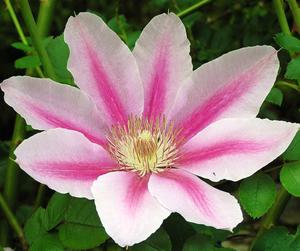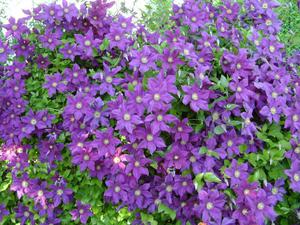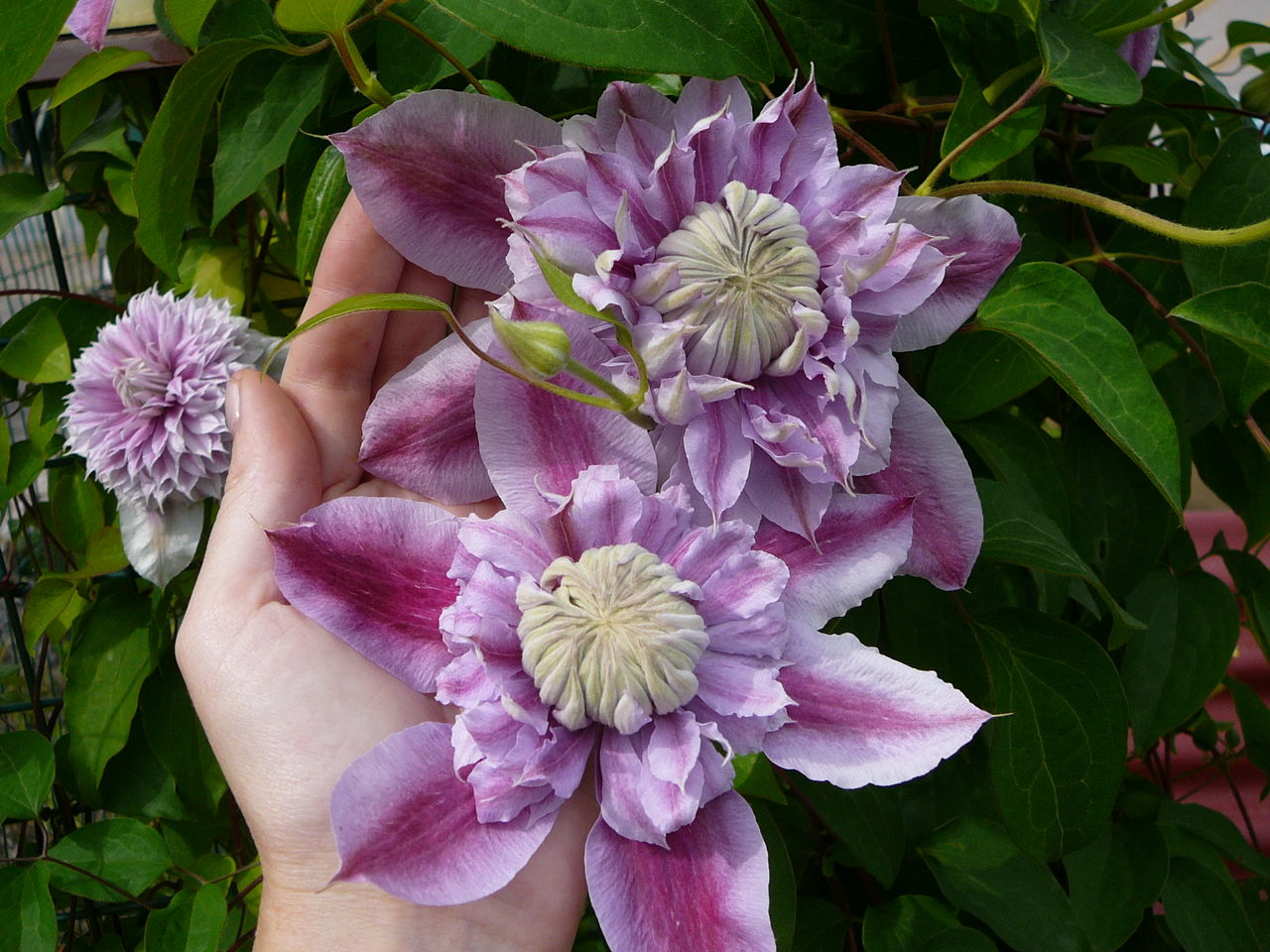Among the many amazing garden plants, clematis take their rightful place. These are vines, curly perennials. The stem can be up to 3 meters long. The flowers open up to 18 cm in diameter. There are 6 sepals, they have a pink-lilac color, the edges are wavy. The shoots are light brown. Clematis are great for decorating fences and gazebos, for vertical gardening of walls.
Planting clematis
Choosing a place for a plant is an important point. Liana does not like strong winds, shade and nearby groundwater. She needs loose, fertilized, drained and not waterlogged soil.
The plant is not at all afraid of transplantation. But this should be done in the fall or spring. The depth of the pit for planting and its diameter is 50 cm. To fill it, humus, sand and garden soil are taken in equal proportions. You can add two handfuls of ash and 120 g of superphosphate.
It is advisable to think in advance about the support for clematis. But in areas with hot climates, metal structures are not recommended. The plant will gradually dry out and wither.
The seedlings should be placed at a distance of half a meter from the supports and walls. And the gap from each other should be at least a meter. During rains, water from roofs and drains should not flow onto the plant.
Landing rules
The hybrid is planted as follows:
- At the bottom of the pit, drainage is laid out of stones, crushed stone and brick fragments 20 cm high.
- An earthen mixture is preliminarily prepared.
- An earthen mound is formed in the center of the hole. The roots of clematis are located along it.
- The root collar is deepened by 10 cm.
- The seedling is watered abundantly.
- Shoots are tied up.
What should not be allowed during landing?
Do not fertilize plants with fresh manure and sour peat. They will quickly perish. Also, there should be no damp, sour, heavy and salty soil. If the soil is acidic, then dolomite flour must be added to it (200 g per square meter).
Plant care
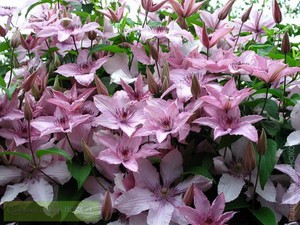 Liana requires regular watering. 3 times in 7 days under the bush, you need to pour 2 buckets of water. The soil should be loosened, weeds removed.
Liana requires regular watering. 3 times in 7 days under the bush, you need to pour 2 buckets of water. The soil should be loosened, weeds removed.
Pruning shoots for the development of clematis plays an important role. It is performed with a sharp and clean instrument. You can trim at any time. Dry, broken off and burnt areas of the plant are removed.
Autumn pruning should be especially careful. The type of clematis next year will depend on it. In the autumn, weak shoots are removed. Forming and shortening of overgrown shoots is carried out.
To get lush and long flowering, anti-aging pruning is performed. This is the removal of vines that are over 3 years old. Pruning is done annually.
Breeding methods for clematis
Reproduction is possible:
- Seeds.
- By cuttings.
- Layers.
The easiest way is to divide an adult bush. On the side, using a shovel, part of the roots is separated together with the vine and planted separately as an independent plant. The seedlings take root very quickly and immediately begin to bloom.
Clematis can be propagated by layering. They should be pressed to the ground in the spring and firmly fixed with staples. The kidney should be selected strong. It is covered with earth by 15 cm. Next year, the branch from the mother plant is cut off.
Large-scale propagation of a vine is possible only by cuttings. They are cut from the middle of a perfectly healthy shoot.The cut at the top is made at a right angle, and the bottom cut at an angle of 45 degrees. There should only be 1-2 knots on each cutting.
Preparation for wintering
When the air temperature drops below zero, the hybrid is covered. But the bushes must be well ventilated so that decay does not occur. In a harsh winter, shelters from above can be covered with sawdust, spruce branches, peat, dry leaves. If the vine is frozen, then you should not remove it. She can give young shoots.
Top dressing of clematis
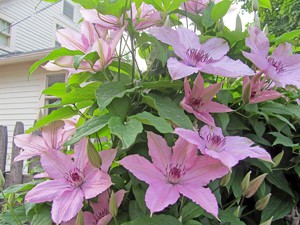 Liana grows very quickly and requires a lot of fertilizer. During the full growing season, fertilizing is required:
Liana grows very quickly and requires a lot of fertilizer. During the full growing season, fertilizing is required:
- Nitrogen fertilization - during the period of active plant growth.
- Complex fertilizers - during the formation of shoots and flowering.
- Ash and phosphorus-potassium fertilizers - after the end of flowering.
When choosing planting material, you need to look at the roots. They must be closed. Planted in a pot or shipping bag. This ensures that the plant will definitely take root in its new location.
If small seedlings are sold, then this is even good. They are easier to transport. If the stem breaks, it will grow back very quickly. They tolerate changing conditions well. They can be grown for some time on a balcony or windowsill. But with transplantation into the ground, it should not be delayed, since clematis grows very quickly.
Of course, the process of growing and caring for clematis is quite complicated. But enjoying the exquisite appearance of these flowers is worth any effort!
